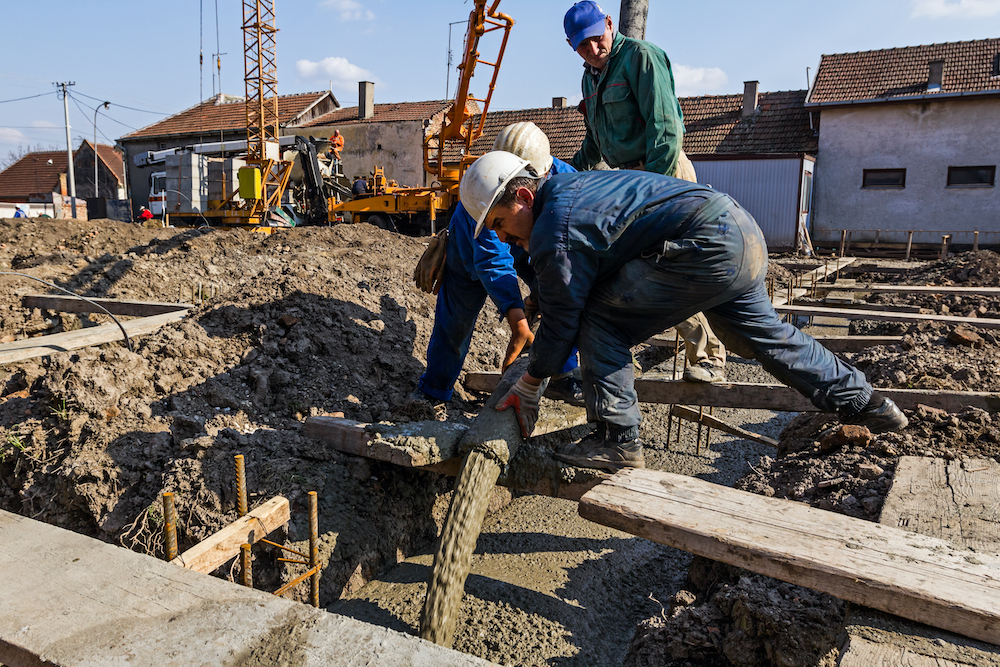
Retainage has been required on virtually all construction contracts for over one hundred years. Recently, interest groups representing contractors and subcontractors have sought legislation to prevent owners on public and private jobs from including a retainage provision in their contracts.
Retainage—What is It?
Retainage is the withholding of a portion of each progress payment earned by a contractor or subcontractor until a construction project is complete. Retainage is calculated as a percentage of each progress payment, typically 5% to 10% of the payment. It is routinely called for in both private and public construction contracts. On public projects, state laws often require the use of retainage and specify the amount and the conditions for releasing it. Otherwise, retainage is governed by contract. Construction contracts between the general contractor and subcontractors normally also contain retainage provisions.
The Benefits of Retainage to Owners
- It Provides a Strong Financial Incentive to Complete a Project
Withholding retainage gives the contractor an economic incentive to stay on the job, work until completion, and correct any remaining details. Near the end of a project, without retainage the contractor may find that it will cost more to complete the work than the remaining contract funds. The retainage is only a small percentage of the payments made to the contractor as the work progresses, but by the end of the job it provides a strong economic incentive to complete the project. - It Provides Readily Available Funds to Remedy a Default
If a general contractor fails to complete a project, retainage provides an immediate source of funds for the owner to use to cure the performance default, particularly if it occurs at the latter stages of the project. Subcontractors and suppliers also benefit because retainage can be used to pay them if the contractor defaults.
What Arguments Are Asserted by Those Opposed to Retainage?
- Does it Increase the Costs of Construction?
If bids on construction projects include a factor for retainage as a cost of doing business, the total cost arguably could be higher. Elimination of retainage, however, will generate new costs for owners. Without retainage, one of the owner’s best ways to assure contract compliance will be lost, and owners will often find themselves in the situation where the cost to complete the work is more that the remaining payments to be made under the contract. Elimination of the benefits of retainage is not the answer. - Does Delay in Releasing Retainage Create Financial Burdens?
“Project completion” can be an elusive term. With many different stakeholders at various levels, a construction project is a complex process. Sometimes public owners are delinquent in the final acceptance of projects, 2 causing a delay in release and receipt of retainage. Subcontractors may not receive their final payments until after the owner releases the general contractor’s retainage. While delays in payments from owners may work a hardship on contractors and subcontractors, retainage requirements are not the cause of any of these delays. These problems should be fixed with clear definitions of “substantial completion” and specific timelines for acceptance of a completed work and release of retainage. Elimination of the benefits of retainage is not the answer. - Is Retainage Needed When Surety Bonds are in Place?
Bonds are not a substitute for retainage. The point of retainage is to give the contractor an incentive to finish the project, and to give the owner cash-in-hand to use to complete minor items. Surety bonds are not an incentive for the contractor. The owner calls on the surety only after the contractor has defaulted. Surety bonds protect the owner, and subcontractors and suppliers on the project, from contractor defaults, but the cost of surety bonds is reduced by retainage. Surety premiums ultimately depend on surety losses, and retainage decreases such losses because the retainage becomes part of the contract balance held by the owner at the time of default and paid to the surety as it performs. Elimination of the benefits of retainage is not the answer. - Can Retainage be Abused?
After substantial completion of a project, retainage can be a factor involved in resolving claims for extra work performed, for delay, or for other disputes that can arise out of a construction contract. Yet, the relative bargaining strengths of parties to a construction contract exist in the marketplace without regard to retainage. A project owner could withhold final progress payments rather than retainage. Market conditions also change. In some markets, subcontractors are in demand and can negotiate their own terms on retainage. If there are abuses of retainage, they should be addressed in contract terms in the marketplace, or on public projects by state laws or mandatory contract terms. Elimination of the benefits of retainage is not the answer.
A different view on Retainage:
“Why Retainage Delays Profitability“
by Nate Budde, Levelset’s Chief Legal Officer
Construction Executive Risk Management, 7/16/15
What Modifications or Compromises Have Been Suggested?
- Hold the Funds in Escrow
The owner could be required to hold the retainage in an interest bearing escrow account. This permits the general contractor to earn interest on the retainage amounts. One variation is to allow the general contractor to withdraw the interest as it is earned, and a requirement that subcontractors must be paid a pro-rata share of any interest drawn is sometimes an additional condition. - Permit Contractors to Offer Other Forms of Security in Place of Retainage
Another option is to permit general contractors to post alternative forms of security such as an additional bond or letter of credit. These often, however, do not give the owner the same protection or give the contractor an equal incentive to complete the work - Reduce or Release Retainage as Projects are Completed
Some states reduce the required retainage by 50% and/or release some of the retainage once a public construction project is 50% completed. This only makes it more likely that retainage will not be there at when it is needed the most. Reduction and release of retainage at some point midway through the contract means that there will be less funds withheld at the end of the contract, when financial incentives are most needed to assure 100% completion of the project.
What is Needed to Make Retainage Work for all Concerned?
- Retainage should be 10% of the total value of a contract, but in no case should it fall below 5%. Below 5%, there can be more economic incentive to move on to a new project than to finish the final items on an existing contract.
- Retainage should be equitable. General contractors should not withhold more retainage from subcontractors than the owner requires of them;
- General contractors should pay subcontractors their retainage when the public owner releases retainage to the general contractor for the subcontractor’s work;
- Owners should be required to release retainage promptly upon completion and acceptance of the work.
Retainage—The Benefits Outweigh the Costs
The retainage withheld is only a small percentage of the progress payments made to contractors as their work is completed, but it provides a strong economic incentive to complete the job.
The Surety Association’s Position on Retainage
We support the judicious use of retainage in all public construction contracts, both at the general contractor and subcontractor levels. On private construction projects, retainage, like any other contract term, should be the subject of negotiation between the parties.
Levelset’s Position on Retainage
While it would be nice to envision a construction payment world in which retainage withholding is unnecessary, retainage is currently a tool perhaps best classified as a necessary evil. Retainage may “get the job done,” but it also provides additional opportunities for inequity in the payment chain. Care must be taken to make sure retainage is treated in a fair manner for its intended purpose, and not used as a de-facto risk shifting mechanism.
Further Reading:
Here are 2 articles on retainage by Levelset’s CEO, Scott Wolfe.

